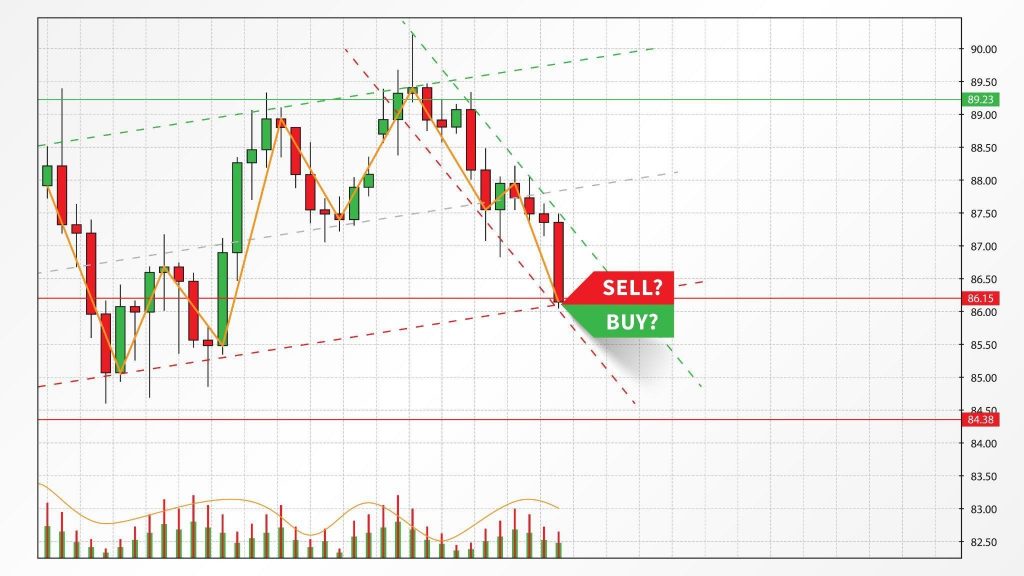When you’re trading stock options, it’s important to understand what’s at stake. You should know the maximum profit you could earn as well as the maximum loss and breakeven point before making a trade. If you don’t, you risk putting yourself in hot water by not understanding how much you stand to lose if an options trade went south. By using an Options Profit Calculator, you can determine theoretical profit and loss levels and have a clear understanding of the risks you’re taking with a trade before you take them.
What Is a Stock Option?

Image via Flickr by mikecohen1872
Stock options are contracts that give investors the right to buy or sell stock at a specific price within a certain timeframe. Stock options give you the ability to earn great returns on very small investments. However, just as stock options give you the ability to earn money in a stagnant market when your stocks aren’t really earning you money, some of the strategies that involve stock options carry substantial risks.
A call option gives you the right, although not the obligation, to buy a specific stock. A put option, on the other hand, gives you the right to sell. The price that you lock in with these contracts is called a “strike price” and you have the right to either buy or sell based on the type of options contract you own.
Understanding the Benefits and Drawbacks
Before I delve into how you can use an options profit calculator, it’s first important to understand the benefits and risks that you accept when you complete different kinds of trades with stock options.
Benefits of Trading Stock Options
One of the benefits of trading stock options is that there is a lower upfront financial investment since you’re not actually buying the stock. The price of buying the option is far less than what you would spend if you were buying the shares outright.
If you’re an options buyer, there’s limited risk. Even if you buy a call or put options contract, you are in no way obligated to take any further action and could simply choose to let the option expire. That means that the greatest risk for options buyers is the amount of money they invest in the option to begin with.
In addition, an option offers built-in flexibility, as the investor can choose to exercise the option and buy the shares, buy them and immediately sell some or all of them, sell the options contract to another trader, or sell an out of the money contract to another investor before it expires, making back some of their money.
Options trading gives traders the opportunity to earn income in a market that is stagnant, where their stock isn’t earning them money.
Risks for Trading Options
As I said above, the risk is extremely limited if you are buying an options contract. The same cannot be said for the seller, or writer, of an options contract. When a seller writes a call or put, they are then obligated to buy or sell within that time frame if the buyer exercises the option, even if the prices are unfavorable for the writer. While the stock can only go as low as zero dollars, there’s no limit for how high the prices can climb.
A trader may sell a call option because they think the price of the stock will stay below the strike price at which the contract is set. The options seller receives a premium payment and hopes that the option will be allowed to expire, worthless. However, if the price goes up without you owning the underlying stock and the buyer exercises the option, the risk is truly unlimited because there’s no limit to how high the market prices can climb and you are obligated to sell the buyer the stock at that price. There is far less risk if you already own the stock, which is called a covered call. You may be forced to sell the shares when you don’t want to but you at least won’t be subject to high market prices.
Investors sell puts when they think that the shares of stock will stay above the strike price. However, if the buyer decides to exercise their option, then the put seller is obligated to purchase shares of the stock, potentially experiencing significant losses when they must turn around and sell the shares at a much higher price than they purchased them at. The only benefit of a put option over a call option is that the stock can only get down as low as zero dollars.
How to Use an Options Profit Calculator
N ow that you fully understand the possible risks of different types of options trades, you better understand why it’s important to use an options profit calculator. This can help you fully understand the potential gains as well as potential risks that could accompany a trade prior to actually taking any risks.
Where to Find Options Profit Calculators
There are a lot of options profit calculators to choose from online. You can also use this options profit calculator for a unique way to view potential returns of different options strategies. There are many others available as well, which you can uncover with a simple online search.
How to Calculate Options Profit
To calculate the return on stock options, you first need to know the premium price for the options contract. You also need to know the value of the asset and the number of contracts you plan to purchase. After that, the steps apply for both call and put options.
1. Subtract the Value of the Asset
Start by subtracting the initial value of the asset in your options contract from the current sale price on the market. For example, if you paid $15 for the contract and you can sell the same asset for $22, the calculation would be $22 – $15 = $7.
2. Multiply By the Total Number of Shares Purchased
The next step is to multiply the value you determined in step one by the number of shares you’re purchasing the option for. For example, if you bought options for 200 shares, the calculation would look like 200 x $7 = $1,400.
3. Subtract the Premium
Next, subtract the cost of the premium you paid. For example, let’s say that you paid $250 for the option to buy the shares. The calculation for this would look like $1,400 – $250 = $1,150. This final amount represents the total profit/loss that could result from the sale.
Other Considerations for Options Profit Calculators
It’s important to note that this is a very basic overview of how you could calculate potential profits from an options trade. The calculator listed above allows you to explore more advanced options trading strategies. It’s also important to remember that the numbers above rely on the assumption that you exercised your option. If you didn’t exercise your option and instead allows the option to expire worthless, then the loss would be the cost of the premium.
There are a few other considerations you should keep in mind as well. First, profit and loss calculations assume that you’ll hold the option position until it expires. However, you can typically close short or long option positions before they expire by selling them. Probability calculations for options profit calculators are also based on the assumption of stabled implied volatility values. If the market is volatile, it could dramatically change the prediction for the options trade.
If you’re trading options, it’s important to start to use an options profit calculator to fully understand the potential gains and losses you could see from a trade. It’s also important to adopt and stick with a particular strategy or set of strategies. Stock options are great for allowing you to earn a strong income through the stock market, even when the market is relatively stagnant.





